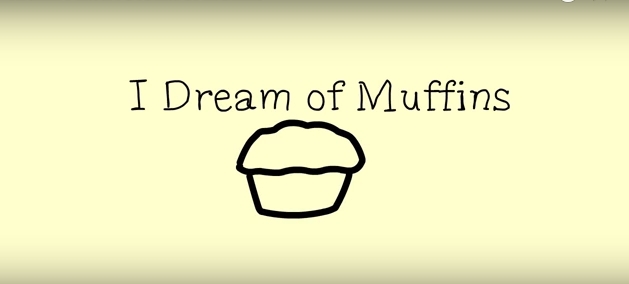The diesel engine makes 3,200 horsepower, and the generator can turn this into almost 4,700 amps of electrical current. The four drive motors use this electricity to generate over 64,000 pounds of thrust. There is a completely separate V-16 engine and generator to provide electrical power for the rest of the train. This generator is called the head-end power unit. The one on this train can make over 560 kilowatts (kW) of electrical power.
This combination of diesel engine and electric generators and motors makes the locomotive a hybrid vehicle. In this article, we'll start by learning why locomotives are built this way and why they have steel wheels. Then we'll take a look at the layout and key components.
By going with a hybrid setup, the main diesel engine can run at a constant speed, turning an electrical generator. The generator sends electrical power to a traction motor at each axle, which powers the wheels. The traction motors can produce adequate torque at any speed, from a full stop to 110 mph (177 kph), without needing to change gears.
Steel Wheels
Ever wonder why trains have steel wheels, rather than tires like a car? It's to reduce rolling friction. When your car is driving on the freeway, something like 25 percent of the engine's power is being used to push the tires down the road. Tires bend and deform a lot as they roll, which uses a lot of energy.
The amount of energy used by the tires is proportional to the weight that is on them. Since a car is relatively light, this amount of energy is acceptable (you can buy low rolling-resistance tires for your car if you want to save a little gas).
Since a train weighs thousands of times more than a car, the rolling resistance is a huge factor in determining how much force it takes to pull the train.
The steel wheels on the train ride on a tiny contact patch -- the contact area between each wheel and the track is about the size of a dime, which isn't a whole lot larger than a tick:
The downside of using steel wheels is that they don't have much traction.
Traction
Traction when going around turns is not an issue because train wheels have flanges that keep them on the track. But traction when braking and accelerating is an issue.
 |
| In front of each wheel is a nozzle that uses compressed air to spray sand, which is stored in two tanks on the locomotive |
This locomotive can generate 64,000 pounds of thrust. But in order for it to use this thrust effectively, the eight wheels on the locomotive have to be able to apply this thrust to the track without slipping. The locomotive uses a neat trick to increase the traction. In front of each wheel is a nozzle that uses compressed air to spray sand, which is stored in two tanks on the locomotive. The sand dramatically increases the traction of the drive wheels. The train has an electronic traction-control system that automatically starts the sand sprayers when the wheels slip or when the engineer makes an emergency stop. The system can also reduce the power of any traction motor whose wheels are slipping.
The Engine and Generator
The main engine in this locomotive is a General Motors 4,300 THP and the locomotive is equipped with EMD's 16-710G3C-T2 engine. The "710" means that each cylinder in this turbocharged, two-stroke, diesel V-16 has a displacement of 710 cubic inches (11.6 L). That's more than double the size of most of the biggest gasoline V-8 car engines -- and we're only talking about one of the 16 cylinders in this 3,200-hp engine.
 |
| The main engine in this locomotive is a General Motors EMD 710 series engine. |
So why two-stroke? Even though this engine is huge, if it operated on the four-stroke diesel cycle, like most smaller diesel engines do, it would only make about half the power. This is because with the two-stroke cycle, there are twice as many combustion events (which produce the power) per revolution. It turns out that the diesel two-stoke engine is really much more elegant and efficient than the two-stroke gasoline engine.
You might be thinking, if this engine is about 24 times the size of a big V-8 car engine, and uses a two-stroke instead of a four-stroke cycle, why does it only make about 10 times the power? The reason is that this engine is designed to produce 3,200 hp continuously, and it lasts for decades. If you continuously ran the engine in your car at full power, you'd be lucky if it lasted a week.
Here are some of the specifications of this engine:
* Number of cylinders: 16
* Compression ratio: 16:1
* Displacement per cylinder: 11.6 L (710 in3)
* Cylinder bore: 230 mm (9.2 inches)
* Cylinder stroke: 279 mm (11.1 inches)
* Full speed: 904 rpm
* Normal idle speed: 269 rpm
This giant engine is hooked up to an equally impressive generator. It is about 6 feet (1.8 m) in diameter and weights about 17,700 pounds (8,029 kg). At peak power, this generator makes enough electricity to power a neighborhood of about 1,000 houses!
Here is the ELECTRIC part:
So where does all this power go? It goes into four, massive electric motors located in the trucks.
Propulsion
The traction motors provide propulsion power to the wheels. There is one on each axle.
Each motor drives a small gear, which meshes with a larger gear on the axle shaft. This provides the gear reduction that allows the motor to drive the train at speeds of up to 110 mph.
 |
| The traction motors provide propulsion power to the wheels. There is one on each axle |
Each motor weighs 6,000 pounds (2,722 kg) and can draw up to 1,170 amps of electrical current.
...So now ya know!





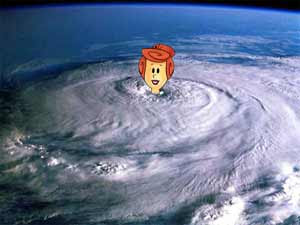
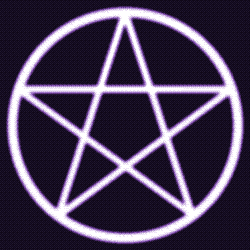

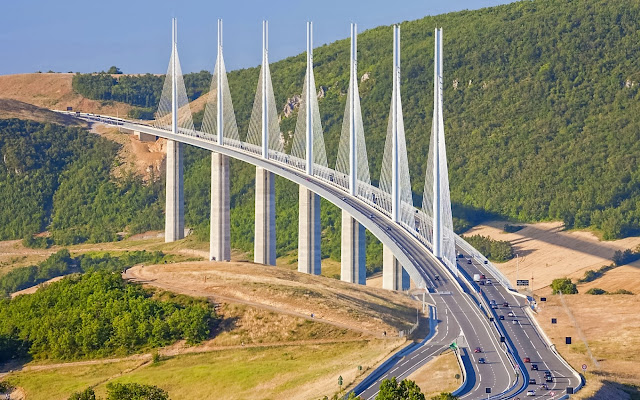
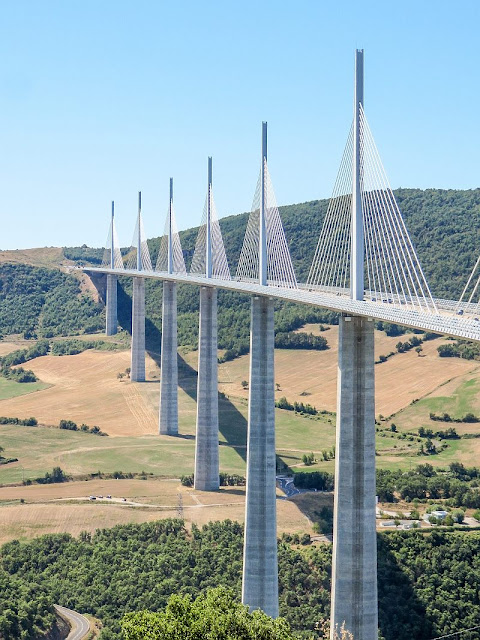
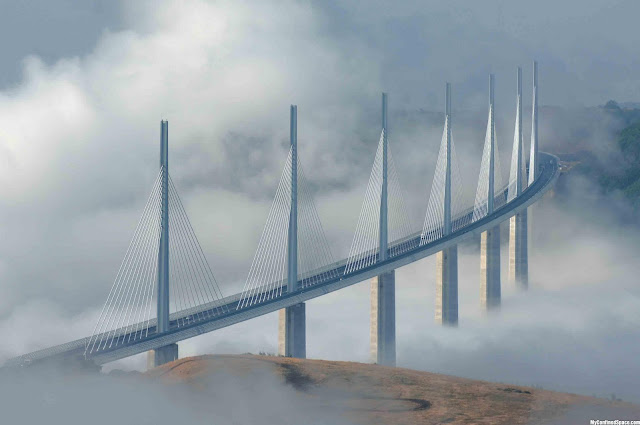





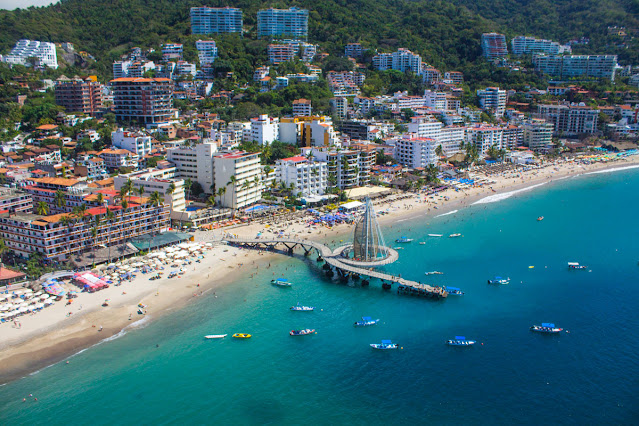
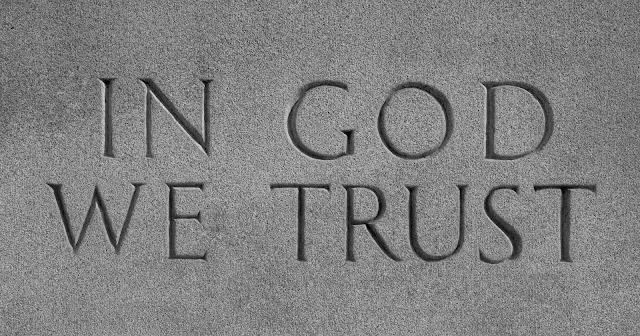 "GOD" ALLOWS EVIL
"GOD" ALLOWS EVIL 








